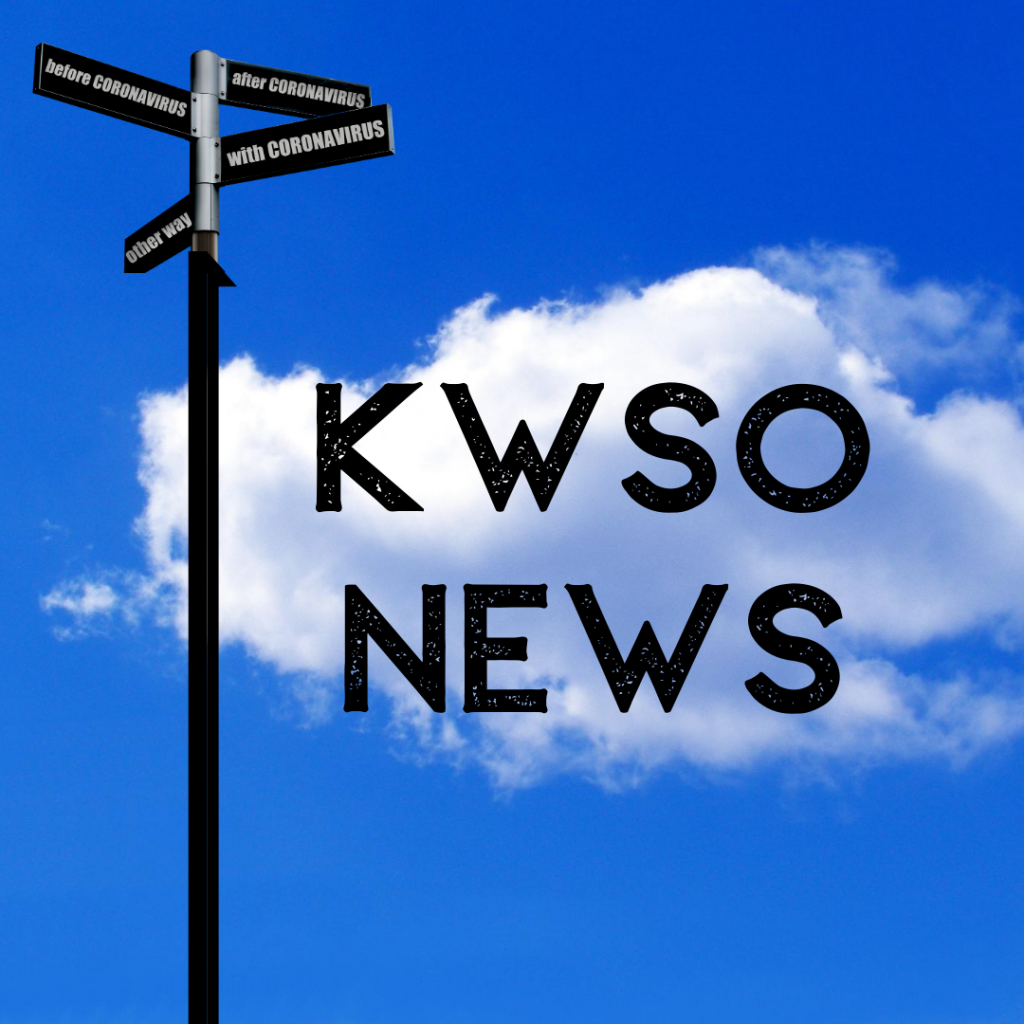Local News
KWSO News for Thu., Sep. 3, 2020
There were 3 more cases of Covid-19 reported in Warm Springs as of Tuesday, September 1, according to Wednesday’s Community Update report. There have been 310 positive cases in total in Warm Springs. Currently, there are 15 active cases and 42 close contacts being monitored by Public Health.
The Oregon Health Authority reported 140 new confirmed and presumptive coronavirus cases – the lowest total in over two months – and three deaths Wednesday, bringing the state total to 27,075 cases and the death toll to 468. It’s the second time this week that the daily case count has been the lowest since June.
The two fires burning on the Warm Springs Reservation were sparked August 16th by lightning. As of yesterday, the P-515 Fire has reached near full containment and the Lionheads Fire at 8,618 acres is 30 percent contained. Northwest Team 7 provided this update Wednesday night: “Wednesday at 6pm, Incident Management Team Northwest Team 7 will transfer command of the P-515 Fire and the Lionshead Fire to Incident Management Team Northwest Team 10. Starting Thursday, NW Team 10 will providing the evening update. Crews on the Lionshead Fire located multiple spot fires on the western flank. Aviation assets are being used to slow the fire’s spread. The P-515 Fire is in good shape and should be turned over to the local unit in a couple days.”
The White River Fire in Wasco County has grown to over 16,000 acres and is 40 percent contained today. The fire perimeter continues to hold and look good while firefighters manage hotspots within a burn out area, according to the evening operational update. In the Canyon, the Redmond Hotshots were able to complete fireline down to the White River.
Oregon will face extremely hot weather for the next few weeks, including the coast. Wildfire managers are concerned about this forecast. The return of high temperatures, low humidity and east winds can turbocharge even the smallest fire start. A smoldering campfire or an errant spark from a vehicle can become a raging blaze in minutes. And this at a time when firefighting resources are already strained in Oregon and nationally. The last three weeks have been extremely challenging for wildland and structural firefighters. They have been working long hours in the heat for weeks at a time in an effort to contain the spread of the state’s current wildfires and keep communities safe. Many people across the state have had to evacuate or feared they might have to. And the threat isn’t over. While the threat from dry lightning in Oregon lessens after August, human activity again becomes the chief cause of fires. So whether this September hot spell spawns new wildfires depends almost entirely on how Oregonians behave in the forest. Taking a few extra precautions while working or recreating in the forest can prevent most wildfires. Make a difference by following a few simple tips:
- Operate ATVs and other motorized vehicles only on established roads.
- Check your vehicle for dragging tow chains that can send sparks into roadside vegetation.
- Don’t park or idle on dry grass or brush – the hot exhaust system can set it smoldering in seconds.
- Check current fire restrictions for the area before building a campfire. Portable cooking stoves using liquefied or bottled fuels are allowed at any time of year. Or simplify your life by bringing prepared foods instead of trying to cook over a smoky fire.
- Smoke only in an enclosed vehicle. Properly dispose of cigarette butts.
- If you see smoke, call 9-1-1.
- Always have fire extinguishing tools on hand
Travelers need to pack their patience and allow extra travel time this Labor Day weekend. With an overwhelming number of travelers using their car and staying closer to home because of COVID-19, many people will again be heading to Central Oregon this week. Central Oregon has been a favorite destination this summer, causing periods of significant congestion on U.S. 97 and on the roads connecting the High Desert and Willamette Valley. This weekend, travelers should expect heavy and slow traffic, especially at the beginning and end of the weekend. Also, travelers should be prepared for slow traffic in small towns and cities along US97 and the routes leading to Central Oregon. ODOT reminds all to obey the speed limit as they are seeing a lot of excessive speeds and high speed crashes. Drive sober and don’t drive distracted; drivers should leave the cell phone to someone else.
The Oregon Health Authority (OHA), Oregon Department of Education (ODE), Lines for Life, and local suicide prevention champions are collaborating to launch the Suicide Prevention and Wellness Program for school districts. This program, part of the new statewide School Safety and Prevention System, is designed to support school districts in implementing and sustaining solid, evidence based and racial equity centered suicide prevention policies and plans.
President Donald Trump is ordering a review of funding of Portland and other Democratic-run cities that have been epicenters of a wave of protests demanding racial justice, saying so-called “anarchist jurisdictions” should be disfavored for federal money. Trump signed a memorandum Wednesday aimed specifically at Portland; New York; Seattle; and Washington, D.C., but including steps that could affect other U.S. cities. The document calls on the White House Office of Management and Budget to detail within two weeks how all federal agencies will submit reports detailing funding to those four cities.
Oregon has launched Healthier Together Oregon, the new State Health Improvement Plan (SHIP) aimed at improving the social influences on health. The 2020-2024 plan, developed over the past year with input from more than 2,500 people across the state, is centered on five priority areas: institutional bias; adversity, trauma and toxic stress; behavioral health; economic drivers of health, including housing, food security and living wage; and access to equitable preventive health care. Healthier Together Oregon focuses on social factors that affect health, “upstream” interventions, and root causes of inequities, like systemic racism as the driver for inequality in education, housing, employment, health care and ultimately, health outcomes. The plan identifies a common vision and shared priorities for what’s needed to improve health in Oregon. For example, the plan calls for declaring institutional racism a public health crisis. It also recommends ensuring access to culturally responsive prenatal and postnatal care for people with low incomes or without legal documentation. And it proposes creating state agency partnerships in education, criminal justice, housing, social services, public health and health care to improve behavioral health outcomes in communities of color. The Healthier Together Oregon plan is available at HealthierTogetherOregon.org.

